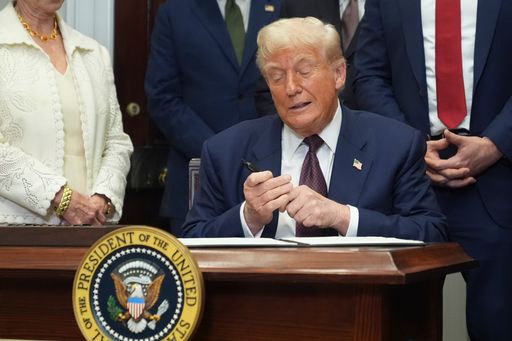US President Donald Trump has called for the sacking of the head of the agency that produces the monthly jobs figures after a report showed hiring slowed in July and was much weaker in May and June than previously reported.
Trump, in a post on his social media platform, alleged that the figures were manipulated for political reasons and said that Erika McEntarfer, the director of the Bureau of Labor Statistics, who was appointed by former president Joe Biden, should be dismissed.
“I have directed my Team to sack this Biden Political Appointee, IMMEDIATELY,” Trump said on Truth Social. “She will be replaced with someone much more competent and qualified.”
Economists warn of trade war fallout
Friday’s jobs report showed that just 73,000 jobs were added last month and that 258,000 fewer jobs were created in May and June than previously estimated.
“A notable deterioration in US labour market conditions appears to be underway,” said Scott Anderson, chief US economist at BMO Capital Markets.
“We have been forecasting this since the tariff and trade war erupted this spring and more restrictive immigration restrictions were put in place. Overall, this report highlights the risk of a harder landing for the labour market.”
Economists have been warning that the rift with every US trading partner would begin to show this summer, and the Friday jobs report appeared to sound the bell.
“We’re finally in the eye of the hurricane,” said Daniel Zhao, chief economist at Glassdoor.
“After months of warning signs, the July jobs report confirms that the slowdown isn’t just approaching — it’s here.”

Immigration restrictions add to labour strains
Experts believe that reduced immigration is also constraining the supply of available workers, which will likely keep hiring subdued in the coming months.
“Because of immigration policy, labour supply growth has nearly ground to a halt,” said Guy Berger, senior fellow at the Burning Glass Institute, which studies employment trends.
“So we’re going to have very weak employment growth. And we look like southern Europe or Japan.”
Still, with fewer workers available, the economy doesn’t need to generate many jobs to soak up the unemployed. That could keep the unemployment rate from climbing much, Berger added.

Where did it all begin?
Trump has discarded decades of US efforts to lower trade barriers globally, instead imposing hefty import taxes — tariffs — on products from almost every country on Earth.
He believes the levies will bring manufacturing back to America and raise money to pay for the massive tax cuts he signed into law on July 4.
But mainstream economists have warned that the cost of the tariffs will be passed along to Americans, both businesses and households.
That appears to have begun. Factories cut 11,000 jobs last month after shedding 15,000 in June and 11,000 in May.
The current situation is a sharp reversal from the hiring boom of just three years ago, when desperate employers were handing out signing bonuses and introducing perks such as Fridays off, fertility benefits and even pet insurance to recruit and retain workers.
The rate of people quitting their jobs — a sign they’re confident they can land something better — has fallen from the record heights of 2021 and 2022 and is now weaker than before the pandemic.















